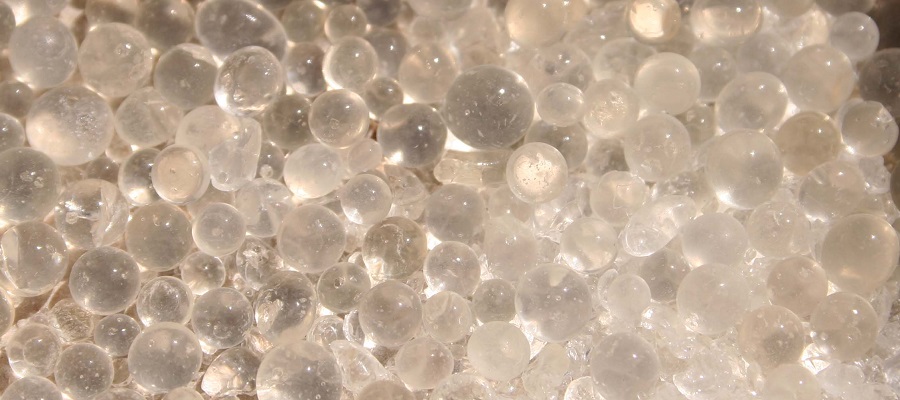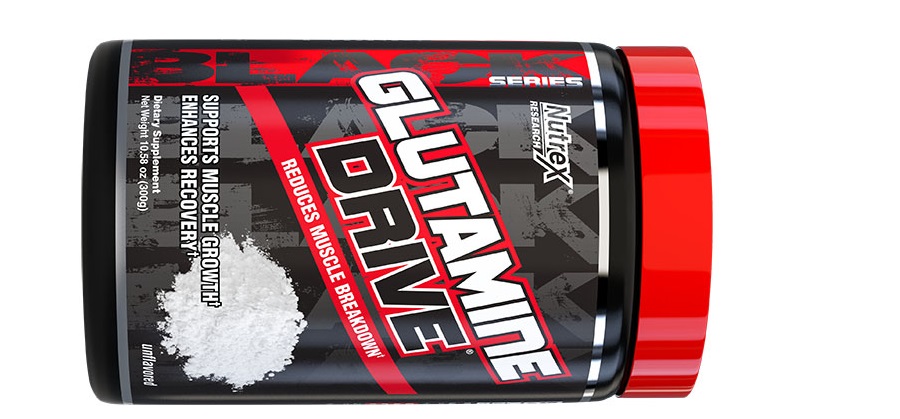Silica, also known as silicon dioxide, is a naturally occurring mineral that is composed of silicon and oxygen. It can be found in various forms in nature, including quartz, sand, and flint. Silica is a very versatile mineral and is used in a wide range of industries due to its unique properties.
One of the most common uses of silica is in the manufacturing of glass. Silica is the primary component of glass, and it gives glass its high melting point and transparency. Silica is also used in the construction industry as a raw material for making cement and for use as a filler in concrete.
| Attribute | Description |
|---|---|
| Name | Silica (Silicon Dioxide) |
| Chemical Formula | SiO2 |
| Molecular Weight | 60.08 g/mol |
| Appearance | Solid crystals or powder |
| Solubility | Insoluble in water |
| Melting Point | 1,713 degrees Celsius (3,095 degrees Fahrenheit) |
| Boiling Point | 2,230 degrees Celsius (4,046 degrees Fahrenheit) |
| Density | 2.65 g/cm3 |
| Crystal Structure | Crystalline or amorphous structure |
| Natural Sources | Quartz, sand, diatomaceous earth, opal, agate, amethyst |
| Industrial Uses | Glass manufacturing, ceramics, construction materials, abrasives |
| Health Benefits | Supports healthy skin, hair, and nails; promotes collagen production |
| Dietary Sources | Whole grains, fruits, vegetables, nuts, and seeds |
| Toxicity | Inhalation of fine silica dust can cause respiratory issues |
| Special Considerations | Silica is used in various industries and must be handled safely to prevent health risks |
Silica is also used in the semiconductor industry for the production of integrated circuits and in the oil and gas industry as a proppant for hydraulic fracturing. It is also used in the food and beverage industry as a flow agent and anti-caking agent in powdered products.
Silica has many other industrial uses, including in the chemical industry, where it is used as a filler and an abrasive, and in the pharmaceutical and cosmetic industries.
Silica exposure can be harmful to human health, especially when it is in the form of respirable crystalline silica, which is a fine powder that can be inhaled and cause lung damage. Long-term exposure to silica dust can lead to silicosis, a lung disease that can cause difficulty breathing, cough, and chest pain.
Research and development in the field of silica is focused on finding new and innovative uses for this versatile mineral, as well as on improving the safety and sustainability of its production and use.
How is silica used in the manufacturing of glass?
Silica is used in the manufacturing of glass as the primary component. Glass is made by heating a mixture of silica, soda ash (sodium carbonate), and lime (calcium oxide) to a high temperature until it melts and becomes a liquid. This liquid is then poured into molds and cooled to form glass.
The silica provides the glass with its high melting point and transparency. The soda ash and lime are added to lower the melting point of the silica and make the glass easier to work with. The soda ash also acts as a flux, helping to form a glassy material by reducing the amount of silica required to make the glass. The lime is added to improve the durability and strength of the glass.
Different types of glass are made by varying the proportions of the ingredients or by adding other materials. For example, tempered glass is made by heating the glass to a high temperature and then rapidly cooling it, which makes it stronger and more resistant to breaking.
In addition, there are different types of glasses such as borosilicate glass, which is made by adding boron to the mixture of silica, soda ash and lime. This type of glass is resistant to thermal shock and has a lower coefficient of thermal expansion.
Overall, silica is a fundamental component in the manufacturing of glass, it gives the glass its high melting point, transparency and strength.
What are the properties of silica that make it useful in various industries?
Silica, or silicon dioxide, has several properties that make it useful in various industries. Some of the key properties include:
-
High melting point: Silica has a high melting point of around 1,710°C (3,090°F), which makes it useful in the manufacturing of glass and ceramics.
-
Hardness: Silica is a hard mineral and has a hardness of 7 on the Mohs scale, which makes it useful as an abrasive in various industrial applications.
-
Chemical stability: Silica is highly resistant to chemical attack and weathering, which makes it useful in a wide range of industrial applications.
-
Insulator: Silica is a good electrical insulator, which makes it useful in the semiconductor industry for the production of integrated circuits.
-
Reactivity: Silica can react with other elements, such as aluminum and titanium, to form new compounds that have unique properties.
-
Porosity: Silica can be made in different forms, such as fumed silica, precipitated silica, and silica gel, that have different levels of porosity, which makes it useful in various applications like thickeners, flow aids, and anti-caking agents.
-
Low coefficient of thermal expansion: Some forms of silica have a low coefficient of thermal expansion, which makes it useful in applications where the material will be exposed to high temperatures and thermal stress.
-
Reactivity: Silica can react with other elements, such as aluminum and titanium, to form new compounds that have unique properties.
Overall, silica's properties such as high melting point, chemical stability, insulator, reactivity, porosity and low coefficient of thermal expansion are what make it useful in various industries.
How is silica used in the construction industry?
Silica is used in the construction industry in several ways, including as a raw material for making cement, as a filler in concrete, and as a component of construction aggregates.
-
Cement: Silica is one of the main raw materials used in the production of cement. It is mixed with other materials, such as limestone and clay, to create the raw material that is then heated to high temperatures to form cement.
-
Concrete: Silica is also used as a filler in concrete. It is added in small amounts to improve the workability of the concrete and to reduce the amount of cement required. This can make the concrete more cost-effective and can also improve its strength and durability.
-
Construction aggregates: Silica is also used as a component of construction aggregates. Construction aggregates are materials that are used in the construction of roads, bridges, and buildings. They include materials such as gravel, crushed stone, and sand. Silica, in the form of sand or quartz, is a common component of construction aggregates.
-
Other uses: Silica is also used as a component of refractory materials, which are used to line furnaces, kilns, and other high-temperature equipment. Also, it can be used in the form of fumed silica as a thixotropic agent in the production of self-leveling flooring and coatings.
Overall, silica is a versatile mineral that is used in a wide range of applications in the construction industry. Its properties such as chemical stability, low thermal expansion, and reactivity make it an important material in the construction industry.
How is silica used in the oil and gas industry?
Silica, in the form of sand or other small particles, is used in the oil and gas industry as a proppant. A proppant is a material that is used to hold open fractures in rocks that have been created by hydraulic fracturing, a process used to extract oil and natural gas from shale and other tight rock formations.
During hydraulic fracturing, a mixture of water, chemicals, and a proppant is injected into the rock formation at high pressure. This creates fractures in the rock, which allows oil and natural gas to flow out. The proppant is used to keep the fractures open, allowing the oil and natural gas to continue to flow.
Silica sand is the most commonly used proppant because it is readily available, inexpensive, and has the right combination of strength, size, and shape to hold open fractures. Other types of proppants, such as ceramics, resin-coated sand, and synthetic materials, are also used in certain applications.
In addition to its use as a proppant, silica is also used in the oil and gas industry in other applications such as in drilling fluids, which are used to lubricate and cool the drilling bit, and to carry cuttings to the surface, and as a component of cement used in the cementing of oil and gas wells.
Silica is also used in the oil and gas industry as an abrasive in the form of sandblasting and as a filler in drilling muds.
Overall, silica is a versatile mineral that is used in a wide range of applications in the oil and gas industry. Its properties such as chemical stability, hardness and reactivity make it an important material in the oil and gas industry.
How is silica used in the food and beverage industry?
Silica is used in the food and beverage industry in several ways, including as a flow agent, anti-caking agent, and thickener.
-
Flow agent: Silica, in the form of colloidal silica or silica gel, is used as a flow agent to improve the flowability of powders and other dry ingredients. It helps to prevent clumping and sticking, which can make it difficult to measure and dispense ingredients. This makes it useful in the production of powdered drinks, spices, and other dry ingredients.
-
Anti-caking agent: Silica is also used as an anti-caking agent to prevent clumping and caking of powders and granules. It helps to keep powders and granules free-flowing, which can improve their handling and storage properties.
-
Thickener: Silica is also used as a thickener in the food and beverage industry. When hydrated, silica can absorb a large amount of water, which can be used to thicken liquids and suspensions.
-
Other uses: Silica is also used as a carrier for flavors and colors, which can improve their stability and dispersion in foods and beverages. Additionally, it can be used as a polishing agent, to give a shiny surface to cand or gummies, or to control the pH in some food products.
Overall, silica is a versatile mineral that is used in a wide range of applications in the food and beverage industry. Its properties such as chemical stability, porosity and reactivity make it an important material in the food and beverage industry. It is generally considered safe by the FDA and is used in food and beverage products in small amounts.
How is silica used in the pharmaceutical industry?
Silica is used in the pharmaceutical industry in several ways, including as a filler, excipient, and glidant.
-
Filler: Silica is used as a filler in the production of tablets and capsules. It is added in small amounts to improve the flowability and compressibility of powders and granules, which makes it easier to manufacture tablets and capsules.
-
Excipient: Silica is also used as an excipient in the pharmaceutical industry. Excipients are inactive substances that are used as a carrier for active ingredients in drugs. Silica can be used as an excipient in the form of colloidal silica or silica gel, which can help to improve the stability, dissolution rate, and bioavailability of drugs.
-
Glidant: Silica is also used as a glidant in the pharmaceutical industry. Glidants are substances that are added to powders and granules to improve their flow properties. They can help to prevent clumping and sticking and make it easier to handle and process powders and granules.
-
Absorbent: Silica is also used as an absorbent in the pharmaceutical industry. It can absorb moisture and volatile compounds, which can help to improve the stability of drugs.
-
Other uses: Silica is also used as a component of dental and surgical cements, as a desiccant and as an abrasive in toothpaste and other oral care products.
Overall, silica is a versatile mineral that is used in a wide range of applications in the pharmaceutical industry. Its properties such as chemical stability, porosity and reactivity make it an important material in the pharmaceutical industry. It is generally considered safe by the FDA and is used in pharmaceuticals in small amounts as a support for the active ingredients.
How is silica used in the cosmetic industry?
Silica is used in the cosmetic industry in several ways, including as a thickening agent, absorbent, and abrasive.
-
Thickening agent: Silica is used as a thickening agent in cosmetics and personal care products, such as lotions, creams, and gels. When hydrated, silica can absorb a large amount of water, which can be used to thicken liquids and suspensions. This makes it useful in the production of cosmetics and personal care products, where a specific consistency is desired.
-
Absorbent: Silica is also used as an absorbent in cosmetics and personal care products. It can absorb moisture and volatile compounds, which can help to improve the stability of cosmetics and personal care products.
-
Abrasive: Silica is also used as an abrasive in cosmetics and personal care products. In the form of silica beads, it is used in exfoliating scrubs to gently remove dead skin cells and smooth the skin.
-
Other uses: Silica is also used as a bulking agent and a carrier for pigments and fragrances in cosmetics and personal care products. Additionally, it can be used as an anti-caking agent and a flow aid.
Overall, silica is a versatile mineral that is used in a wide range of applications in the cosmetic industry. Its properties such as chemical stability, porosity, and reactivity make it an important material in the cosmetic industry. It is generally considered safe by FDA and is used in cosmetics and personal care products in small amounts.


